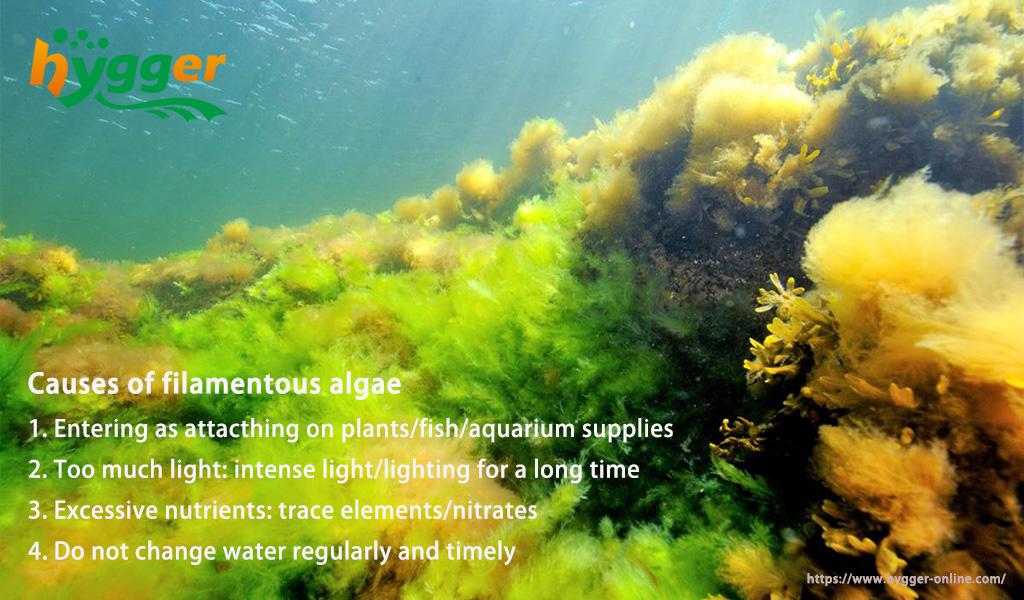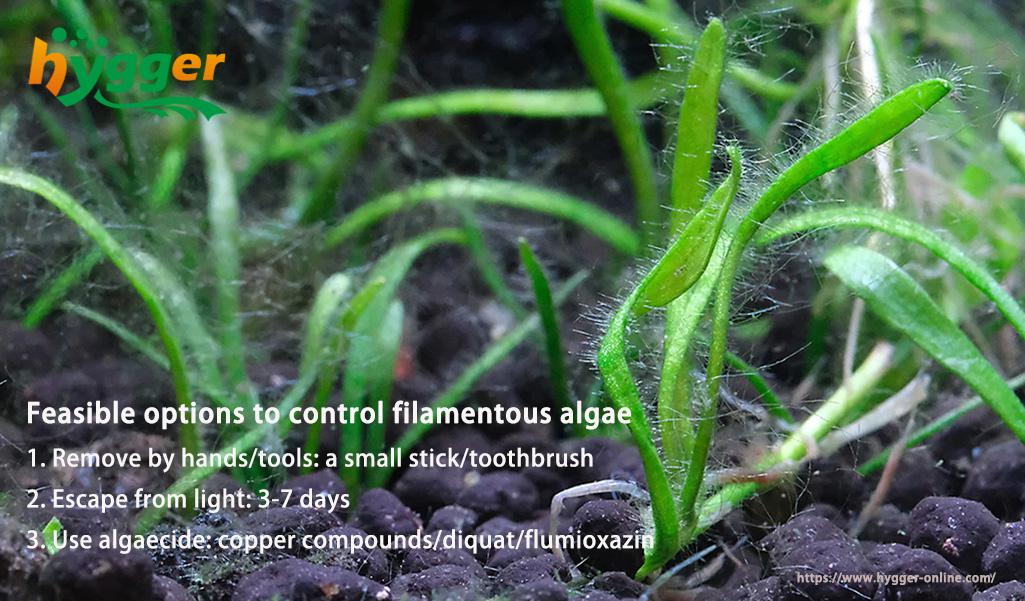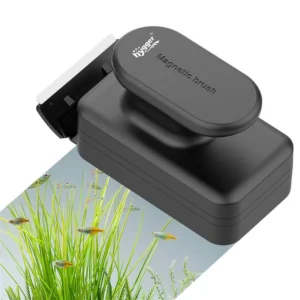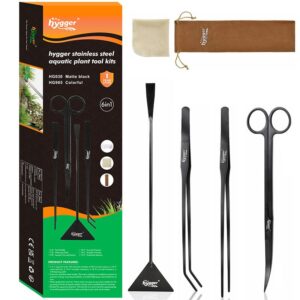Filamentous algae are from the Chlorophyta family, featuring green threads. Exactly, the algae look like your hair in shape. They can grow up to 30 cm and possess an organelle at their roots. Besides, filamentous algae prefer to attach to rocks, wood, or aquatic plants. Usually, the algae also float to the water surface. In this article, let’s take a deep dive into the causes and control options of filamentous algae.
Content Table
What Causes Filamentous Algae?
Filamentous algae may attach to aquatic plants, fish, or aquarium supplies. If you don’t check these objects before adding them to your tank, the filamentous algae will get the opportunity to enter your aquarium. On the other hand, filamentous algae will grow fast and thrive in your tank because of too much light, including intense light or lighting for a long time. Moreover, excessive nutrients also accelerate the growth of filamentous algae. When there are excessive nutrients in your tank, the water may contain plenty of trace elements. And it will provide a good habitat for filamentous algae.
Overfeeding leaves uneaten food, and it will be rotten, and finally decomposed into nitrates. Meanwhile, feces, rotten leaves of plants, or other debris also can be decomposed into nitrates. However, nitrates are food sources for aquatic plants and filamentous algae. In addition, filamentous algae will grow if you do not change your water regularly and timely. Without water change, the nitrate level may become higher day by day.

Are Filamentous Algae Harmful?
Some people believe that filamentous algae are symbols of good water quality, and it can help to purify the water. The algae are not toxic, but too many filamentous algae will also be harmful to your aquarium. For one thing, there will be less room for your fish to swim and explore. For another, aquatic plants and fish will be entangled easily. It finally limits the growth of plants, while it will also lead fish to die. The filamentous algae will consume the oxygen in the aquarium, and it will leave less oxygen for your fish and aquatic plants.
In addition to this, filamentous algae may make your aquarium less attractive. Nonetheless, the algae can remove the ammonia, thus, a few filamentous algae in your tank are acceptable.

What Eats Filamentous Algae?
Seeing that the excessive filamentous algae are bad for your fish and plants, then removing them from your tank will be necessary. Introducing some algae-eaters is an excellent choice exactly. Nevertheless, it is recommended to introduce them before you find filamentous algae in your tank.
1. Amano shrimp
Amano shrimp are also named caridina multidentata. The shrimp can eat filamentous algae quickly, it is also called a filamentous algae killer. However, sometimes they may have an impact on the substrate, especially in areas without aquatic plants. Aside from that, the shrimp are excellent swimmers, as a result, it is better to keep them in a large aquarium. Meanwhile, the Amano shrimp are social animals. Consequently, it is better to keep the shrimp in a group of six or more.
2. Snails
Sun snails and nerites are feasible. These two can use their rasping tongue to remove the algae on surfaces, such as fish tank decorations, glass, and aquarium rocks. But the snails may lay small white egg cocoons, which will not develop into snails in freshwater tanks. Unluckily, the egg cocoons are hard to remove due to they are firmly attached to the substrate. But they will disappear from your tank after some time.

3. Siamese algae eater
Siamese algae eater can play a role in removing filamentous algae, it can be also helpful to remove other algae in aquariums, black beard algae for example. Besides, The algae eater is a social fish, and keeping three in your tank is better, but six is the best.
Control Options
Aside from introducing algae-eaters, next, we are going to discuss some other feasible control choices.
1. Remove by hands or tools
You can gently grasp and then remove the filamentous algae from your tank. Besides, you can use some tools, such as a small stick, toothbrush, and aquarium cleaner. When you eliminate the algae, please remember to remove it gently. Or the algae may damage your plants.
2. Get away from light completely
If there are low-light plants in your aquarium, Amazon sword, Java moss, and Moneywort, for instance, you can keep your tank away from light completely for about 3–7 days. The algae need light to grow, accordingly, you can control the filamentous algae. However, you should make sure of great filtration during the period. If you don’t know what light level your plants need, you can go to Easy Low Light Aquarium Plants For Fish Tank to determine if your plant is in low light.
3. Use algaecide
Copper compounds, diquat, and flumioxazin are suitable options. However, you should be cautious about using herbicides, or you may kill your plants and fish indirectly. Consequently, here are some tips for you.
The copper sulfate can bind with calcium in aquariums with hard water, and then precipitate the solution, which can not kill filamentous algae. Therefore, copper sulfate can not make sense in controlling filamentous algae in hard water. Furthermore, copper compounds may be toxic to fish because of excessive amounts. On the other hand, you should use flumioxazin in tanks with a pH level below 8.5. Or the flumioxazin will degrade quickly and make no sense.

Reminder
Although you can remove the filamentous algae, it is better to prevent them from your tank. Here, we will give you some pointers for the prevention of filamentous algae.
1. Change water timely and regularly
Water change can reduce the nitrate level to decrease the nutrients for filamentous algae. And then it could limit the growth of the algae. By the way, it is recommended to change the water once a week. But you can make another plan according to your tank.
2. Reduce light
It is necessary to keep the ideal lighting level. Since the light affects the growth of fish and aquatic plants, but also makes the spread of filamentous algae be reality. It is great to keep the aquarium light on for about 8–10 hours per day and adjust the light intensity according to your tank.
3. Clean your aquarium filter regularly
The filter may contain feces and debris, which could be a food source for filamentous algae after decomposing. In addition to this, keeping the waterfall filter clean makes sense in maintaining great and stable water quality.
4. Reduce the amount and times of food
Do not overfeed and make sure the amount and times of feeding. By doing so, the uneaten food will be lessened. Then the nitrates from the decomposition process will be decreased accordingly.
That’s all for today, hope the article is helpful to you! By the way, welcome to leave your ideas in a comment. Thanks for your reading!


Leave a comment